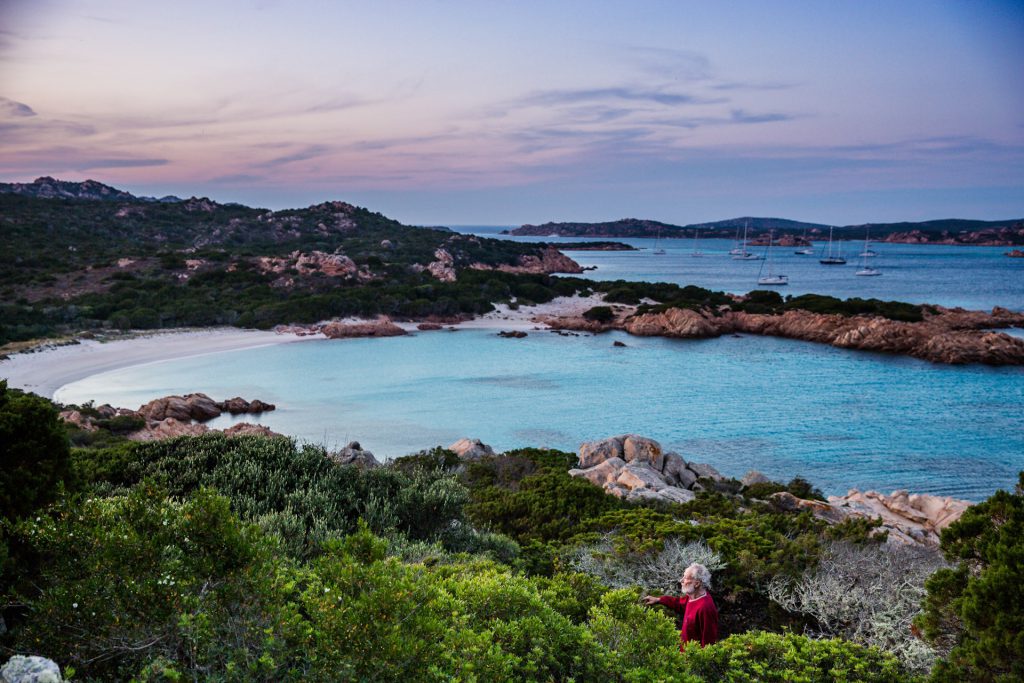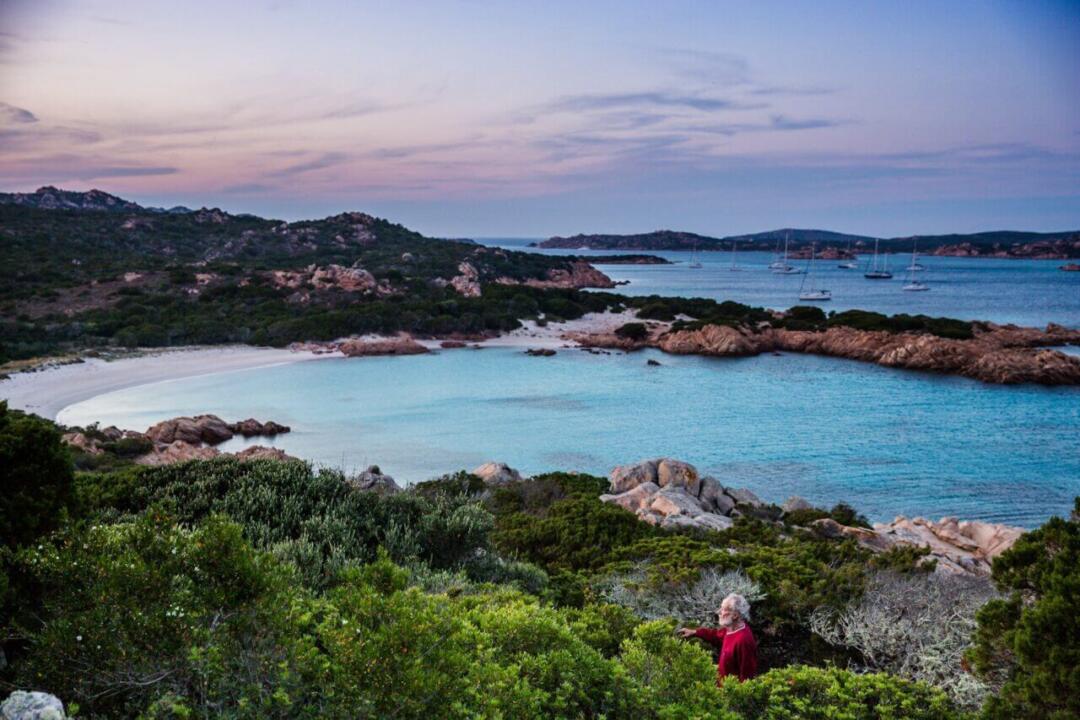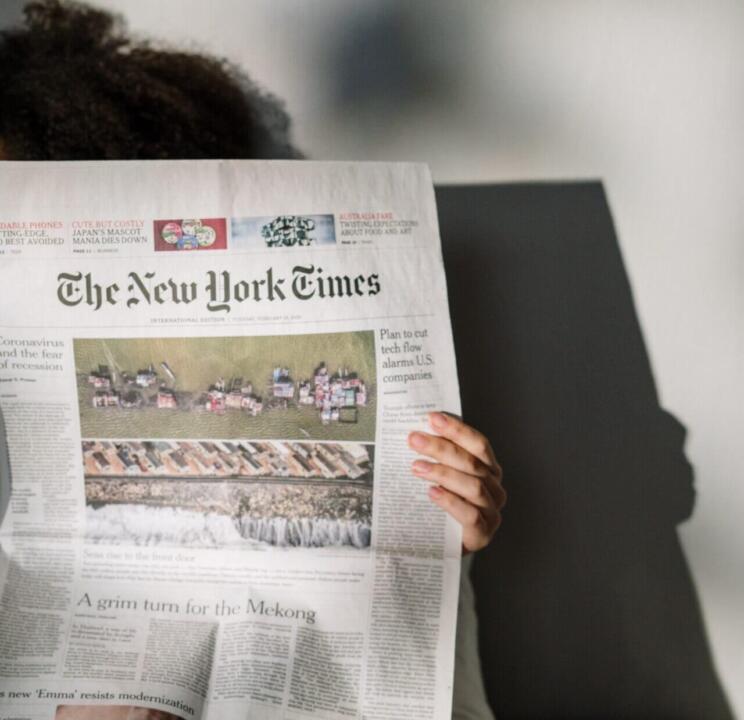Magazine journalists deliver stories that transform our lives and help us see the world differently. That is why eMagazines is using this new series to shine a spotlight on these incredible truth-tellers and reveal the hard work that goes into creating their magazine masterpieces.
First on our list is National Geographic photographer Michele Ardu. Ardu’s photo of Mauro Morandi alone on Budelli Island won him a cover placement in National Geographic’s Best Travel Photography list of 2017. Today, his photo has resurfaced on National Geographic’s website in the current context of isolation and quarantine. Read on for his photography philosophy and why he sees quality as more than the composition and framing of a photo.
You Will Never Get Lost
Michele Ardu did not always know that he would be a photographer. But he knew that he wanted to communicate—to translate the experiences and perspectives of others. He has always been interested in perspective, perhaps because his is so unique.

Ardu is from Sardinia, a large Italian island immediately south of Corsica and immediately north of Tunisia in the Mediterranean Sea. It is a distinctive place, unique in its geography, language, and culture from the rest of Italy. And Ardu credits a dedication to his roots with his drive and success as a photographer.
“I always thought that it doesn’t matter where you go,” Ardu says. “It doesn’t matter if you don’t know where you are going. As long as you remember where you come from, where you’re starting your journey, you’ll never get lost.”
Though he is based in London and travels throughout the world for his work as a documentary photographer, somehow Ardu always manages to return to what he affectionately calls “his island.” It was on his island that he photographed Morandi, the subject whose portrait earned him a prized spot on Nat Geo’s website. But Ardu’s career did not start with photography. It began with a degree in biomedical engineering. It was a trip to the U.S. and the Museum of Modern Art that changed his mind. After seeing a photo by William Gedney, Ardu found himself drawn to a new way of translating what he saw—through the lens of a camera. It was in London that he had his first chance to try it out.
The Ghost at the Fashion Show
Ardu’s first assignment came as an invitation to cover a fashion show. “It wasn’t a fashion shoot,” he’s quick to say. In fact, Ardu did not know one model from the next. But then he was not interested in the fashion. What he wanted to do was show what you did not see on the runways: the backstage atmosphere.
“To me, what was important was to see people panicking and rushing, getting excited, crying,” Ardu remembers. “To me, it’s even more beautiful because it’s so real.”
When you are a photographer on a job, Ardu says, your sacred charge is not to affect your subject in any way. That is why he found himself in the back row.
“It’s you as a photographer being a ghost, entering someone else’s world.” And once you are in that world, you translate it through the camera as honestly, unobtrusively, and precisely as you can.
A Photo at Sunset
In June of 2016, Ardu had the perfect opportunity to document an entirely new perspective: Mauro Morandi, caretaker and sole resident of Sardinia’s Budelli Island. An Italian newspaper, La Stampa, called him and asked if he would be willing to photograph Morandi’s daily life on the island. Ardu immediately agreed, with the one condition that he could spend the night on the island. “If you want to tell the story of how a man lives,” Ardu insisted, “you need to see a full day.”
Ardu spent 24 hours with Morandi, following him and talking with him, always working to understand the caretaker’s unique perspective. The iconic photo happened at sunset.
Ardu had asked Morandi where he liked to go “to breathe.” He followed the caretaker up to a hill on the island. Morandi stood out in a red jersey against the verdant green of the hillside, his startlingly open eyes trailing something unseen. Then Ardu noticed another equally striking visual—yachts congregated in the bay just beyond Morandi’s and just within shot of the camera: a perfect metaphor for Morandi’s unusual lifestyle. Ardu did not have to say anything to Morandi. He just stood and breathed and watched the sunset. Ardu quickly took the photo.

“Sometimes it’s like lightning,” Ardu remembers. “This is the translation. This is how I distill his story into one shot.” And that shot made its way into the National Geographic Best Travel Photography of 2017.
During his time with Morandi, he spoke with the older man about everything from nature to the extreme solitude that was his daily routine. Morandi is the only inhabitant of his island, an isolation that makes social distancing comparatively mild.
“If you are not fine with yourself,” Morandi told Ardu, “you won’t be fine on your own.”
This resonated soundly with Ardu’s conviction that if you know where you come from, you cannot possibly be lost. Even if you do not know where you are going.
Journalism, Ethics, and Acetaminophen
Why is good magazine journalism worth the price of a subscription? Like his shot of Morandi at sunset, Ardu distills his answer into one quick response: “Because of the truth.” Ardu’s photography, like the text of reporters, is subject to intense, multilayered scrutiny from the moment he submits a digital file to the first editor at National Geographic.
News matters. Words matter. Photos matter. And while responsibly imparting reality through impeccably sourced content is a priority for magazines like National Geographic, it is not for all content on the internet.
“It’s like going to a pharmacy and buying medicine from somebody who doesn’t even know what paracetamol [acetaminophen] is,” Ardu says of looking to unreliable sources for information and content. “It’s the same thing when you’re buying news, you’re buying information—not only opinion, you are buying analysis of facts.”
Ethics govern Ardu’s photography and his conduct, too. When COVID-19 threatened to blanket the world, Ardu made a decision that despite the myriad opportunities for a documentary photographer to chronicle the historic pandemic, he would quarantine himself along with the rest of the world.
“In such a time, you cannot put your ego—which wants to take the best shot ever—before the importance of respecting the rules for the public health.”
It is not just his vibrant images that capture reality which make Ardu’s work invaluable to us: it is also the ethics behind those images.
##
Don’t miss our next feature! We’ll spotlight Stephen Rodrick, a writer whose article on Greta Thunberg’s fiery global activism graces April’s special climate edition of Rolling Stone.
Jessica Gable



